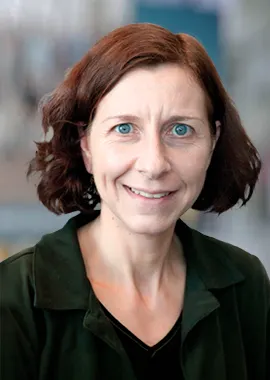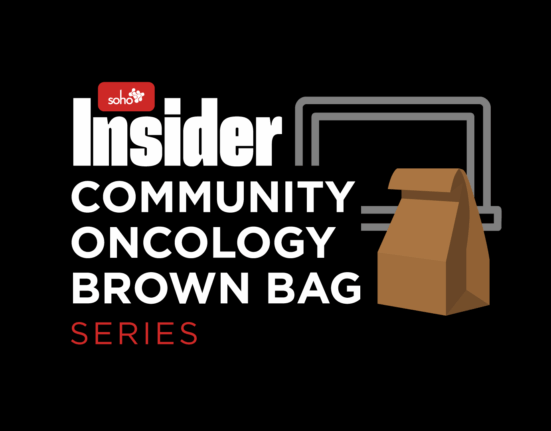A new National Cancer Institute (NCI) initiative seeks to redefine the standard for personalized cancer care in acute myeloid leukemia (AML) and myelodysplastic syndromes (MDS).
Known as myeloMATCH—(Myeloid Malignancies Molecular Analysis for Therapy Choice)—the ambitious program integrates molecular profiling, rapid diagnostics, and clinical trials with early phase 2 endpoints to provide patients with precision therapies tailored to their unique genetic profiles. It represents a new framework that promises to improve outcomes in a disease space that has long been resistant to advances by offering tailored treatments that were once out of reach for many patients.
“We’ve deconstructed AML therapy and developed a treatment algorithm that allows us to find the most effective and least toxic therapies at each stage,” Harry Erba, MD, PhD, co-chair of the myeloMATCH senior science council and professor of medicine at Duke Cancer Institute, said in an interview with SOHO Insider. “We are trying to understand the biology of AML and learn how to optimize treatment at every stage along the patient’s journey.”
MyeloMATCH is the blood cancer component of the NCI’s broader precision medicine initiative, which includes other programs like ImmunoMATCH and ComboMATCH. All three programs are successors to NCI-MATCH, the NCI’s original precision medicine clinical trial that demonstrated that patients with advanced cancer may benefit from genomic sequencing to help plan their treatment.
‘Something’s got to change’
The heterogeneity of AML and MDS plays a critical role in the rapid progression of these diseases. AML, an aggressive cancer of the blood and bone marrow, remains challenging to treat, with survival rates largely unchanged over the past two decades. Only 30%-40% of patients under the age of 60 survive beyond five years, and outcomes for older or unfit patients remain dismal.2
“For the most part, survival statistics for AML today are not that different than they were 20 years ago,” said Jerald Radich, MD, a professor at the Fred Hutchinson Cancer Center and the co-chair of the myeloMATCH Laboratory Assays & Informatics Group. “Something’s got to change.”
Traditional treatment regimens, such as the decades-old “7+3” chemotherapy, continue to be the standard despite their limited efficacy against a heterogeneous and fast-moving target.
“AML and MDS are a heterogeneous group of cancers that can progress very quickly,” Dr. Radich said, noting that the average AML patient presents with three to five genetic mutations.
This complexity underscores the need for rapid subtype identification to match patients with tailored therapies.
“Treatment advances depend in part on the ability to rapidly identify which subtype of cancer each patient has so that treatments can be tested for their specific cancer,” Richard Little, MD, said, the program’s NCI coordinator, in the press release announcing the launch of myeloMATCH.
The myeloMATCH program seeks to accelerate the development of targeted treatments without relying on the traditionally slow process of clinical trials.
“Phase 3 studies can take up to a decade to complete,” Dr. Erba said. “During that time, new information and new drugs may make the results obsolete. Phase 3 studies typically only evaluate a single intervention. MyeloMATCH seeks to optimize the treatment of AML every step along the patient journey by evaluating novel targeted therapies in a series of randomized phase 2 studies. To accomplish these aims, we need to identify the targets rapidly and follow measurable residual disease (MRD) closely along this treatment path.”
Leveraging rapid diagnostics
MyeloMATCH aims to bridge these gaps by leveraging rapid diagnostics, including next-generation sequencing (NGS) technologies such as Thermo Fisher Scientific’s Ion Torrent Genexus System. Capable of delivering molecular profiles within 24 hours, the technology is significantly faster than traditional methods.
“Time is of the essence in AML,” said Luca Quagliata, PhD, the global head of medical affairs for clinical NGS and oncology at Thermo Fisher. “Patients can deteriorate quickly, so we need to match them to the right therapy as fast as possible.”
Quagliata described the Ion Torrent NGS technology, which uses Thermo Fisher’s proprietary ultrahigh-multiplex polymerase chain reaction chemistry, as a “game changer” due to its ability to quickly generate a patient’s molecular profile.
“Typically, molecular analysis by NGS takes a couple of weeks, but this [Genexus] system allows us to generate complex data much faster,” Dr. Radich said.
With the rapid NGS system in place, the bottleneck has shifted to talent and staffing, according to Dr. Radich.
“The issue is both technical and a simple matter of person-power,” Dr. Radich said. “The new technology advances are terrific, but many aspects of testing are still very hands-on. For instance, growing cells takes 24 hours, but the overall workflow demands significant effort to maintain such a fast pace.”
How MyeloMATCH works
To participate in myeloMATCH, patients must be newly diagnosed and have not yet received treatment for MDS or AML. Enrolled patients immediately undergo molecular profiling and other testing for the purpose of subtyping and clinical trial assignment.
“Once a newly diagnosed AML patient walks in the door, they’ll get state-of-the-art diagnostic care within 72 hours, which really pushes the envelope,” Dr. Radich said.
Unlike traditional clinical trials, MyeloMATCH employs a tiered design to address the complexities of AML and MDS, categorizing trials by disease stage and molecular subtype. The program’s structure consists of four tiers:
- Tier 1: Induction therapy for newly diagnosed patients.
- Tier 2: Trials targeting MRD.
- Tier 3: Studies for patients requiring stem cell transplantation or immunotherapy.
- Tier 4: Advanced treatments addressing ultralow levels of residual disease.
If the initial treatment reduces a patient’s disease, they may undergo further genetic testing to match them with a subsequent trial targeting their remaining disease. As the disease burden decreases further, investigators use increasingly sensitive tools, such as biomarker assays, to identify genetic changes driving cancer growth. These insights guide the design of MyeloMATCH trials targeting residual cancer cells.
The program aims to enroll several thousand patients in clinical trials within the first few years, with additional substudies introduced over time. Blood and bone marrow samples collected during the trials will help refine assays and uncover genetic changes associated with treatment resistance.
The trial structure spans every stage of treatment, from induction therapy to advanced options like stem cell transplantation.
“Once you go into myeloMATCH, you are always in myeloMATCH,” Dr. Radich said.
Patients are continuously reassessed and matched with appropriate trials as their conditions evolve. This adaptability ensures that no patient is left without options, even if their disease progresses, Dr. Radich explained.
“Once you register into this system and get your molecular profile done, you can receive standard therapy,” he said. “But as soon as we have a trial that’s available for your subtype, you can be pulled in. This is going to give you constant exposure and availability to whatever we think is the new and best [therapy] out there throughout your whole experience.”
Dr. Erba highlighted the program’s flexibility regarding patient participation and treatment protocols.
“We don’t lose a single patient if they sign up for the master screening reassessment protocol,” he said. “If we don’t have a protocol, the local site can give whatever therapy they want.”
The program even allows local sites to administer therapies outside of NCCN recommended treatments.
“We just said: ‘Give them a therapy, tell us what they got, how they responded, and send us a sample,’” Dr. Erba explained. “Maybe they’ll be eligible for a transplant study in Tier 3. That way we don’t lose anybody.”
To date, the program has launched three protocols and plans to have a dozen active trials addressing various molecular mutations. The trials prioritize efficiency, using randomized phase 2 designs with early endpoints such as MRD-negative remission.
This portfolio of primarily phase 2 studies is designed to identify which promising treatments warrant larger, definitive clinical trials outside of MyeloMATCH.
“We hope to have about a dozen protocols going for different molecular mutations at all times,” Dr. Radich explained. “We’re creating a dynamic system where therapies are continuously refined and optimized.”
Collaboration among stakeholders
The rarity of AML demands a collective effort across institutions to pool resources, enabling researchers to gather sufficient patient data, conduct comprehensive trials, and develop effective therapies. Without this cooperation, advancing treatment for AML on a meaningful scale would be nearly impossible.
The MyeloMATCH clinical trials are being conducted by the National Clinical Trials Network, with participation from the NCI Community Oncology Research Program. Treatment trials are led by SWOG Cancer Research Network, the Alliance for Clinical Trials in Oncology, ECOG-ACRIN Cancer Research Group, and the Canadian Cancer Trials Group. Some trials are already underway, while others will open at hundreds of cancer care sites across the United States and Canada.
The program’s diagnostic network includes leading institutions such as Dr. Radich’s Fred Hutchinson Cancer Center, Children’s Hospital Los Angeles, and the Frederick National Laboratory for Cancer Research. These centers process patient samples, provide detailed risk assessments, and ensure accurate trial assignments through daily reviews by clinicians, laboratory experts, and informatics specialists.
From its inception, MyeloMATCH was designed to link historically independent research groups—such as SWOG and ECOG-ACRIN—with community hospitals, pharmaceutical companies, and patient advocates. This level of collaboration is rare in cancer research, where competition for funding and patient enrollments often limits cooperation.
“In most cancers, cooperative groups don’t typically collaborate because they compete for grant money,” Dr. Radich explained. “But AML is a rare disease, and we realized that all the cooperatives would need to come together to make this work.”
Dr. Erba also praised the program’s collaborative nature.
“The NCI, academic physicians, laboratory investigators, patient advocates, and the FDA all collaborated from the start to make this happen,” he said. “We have to do better for people with AML and MDS. The only way to do that is to work together and let the best science come forward.”
This collaboration extends into trial design, where participating groups share patients and resources. For instance, a patient at a SWOG-affiliated hospital can enroll in an ECOG-ACRIN trial if their molecular profile matches its criteria. This flexibility ensures that cutting-edge therapies are accessible to the widest range of patients, regardless of their treatment center.
“This level of integration is unprecedented,” Dr. Radich said.
Data sharing is another critical component of this collaboration. An extensive informatics infrastructure tracks patients, samples, and outcomes in real-time, linking diagnostic labs and clinical trial sites.
“It’s an immense undertaking,” Dr. Radich said. “We’ve built this system from the ground up to ensure seamless coordination across hundreds of institutions.”
Industry partners also play a crucial role in MyeloMATCH’s success, with many signing agreements with the NCI to supply novel therapies for the program. “More are coming, so I think [industry] can see the benefits of this [program],” he said. “Improving the efficiency of developing novel therapies for people with cancer is going to require everybody being involved—patient advocates, academic clinicians, scientists, the NCI, industry partners, the FDA, the whole gamut.”
Democratizing access to precision medicine
A key goal of myeloMATCH is to democratize precision medicine by extending access to cutting-edge treatments to patients in community settings, addressing longstanding inequities in cancer care.
“We’ve worked hard to ensure inclusivity,” Dr. Erba said. “Every patient, no matter where they’re treated, deserves access to these innovative therapies.”
The MyeloMATCH initiative spans over 2,200 sites across the United States and Canada, enabling patients in both academic and community settings to access advanced therapies. Historically, advanced treatments and clinical trials have been concentrated in major academic centers, leaving patients in community hospitals underserved. By extending trials to nonacademic sites, MyeloMATCH ensures that patients from diverse geographic and socioeconomic backgrounds benefit from the latest advancements.
“The data from the AML studies we are doing that lead to new therapies typically come from major academic centers that see a lot of leukemia,” Dr. Erba said. “These studies may not actually include much of the population of North America and specifically people who cannot go to major academic centers.”
To encourage participation from community hospitals, the trial design was intentionally simplified to reduce barriers, Dr. Radich explained.
“We’ve made the trial design as easy as we can so it’s not really onerous on any community site,” Dr. Radich said. “A community hospital should be able to activate these trials and get on board. We should be able to reach out to a huge portion of the population. [Patients] shouldn’t have to go to just referral academic centers.”
Extending the model to other diseases in the future
MyeloMATCH investigators envision broader applications for the initiative.
“This initiative is teaching us how to optimize therapy for rare diseases like AML,” Dr. Radich said. “The lessons we’re learning here can—and should—be applied to other cancers.”
The work accomplished by the myeloMATCH architects over the past five years—from informatics strategies to molecular techniques—will serve as a foundation that can be readily applied to other diseases.
“This is about more than AML. It’s about creating a model for how we can use science, technology, and collaboration to revolutionize cancer care,” Dr. Erba said.







